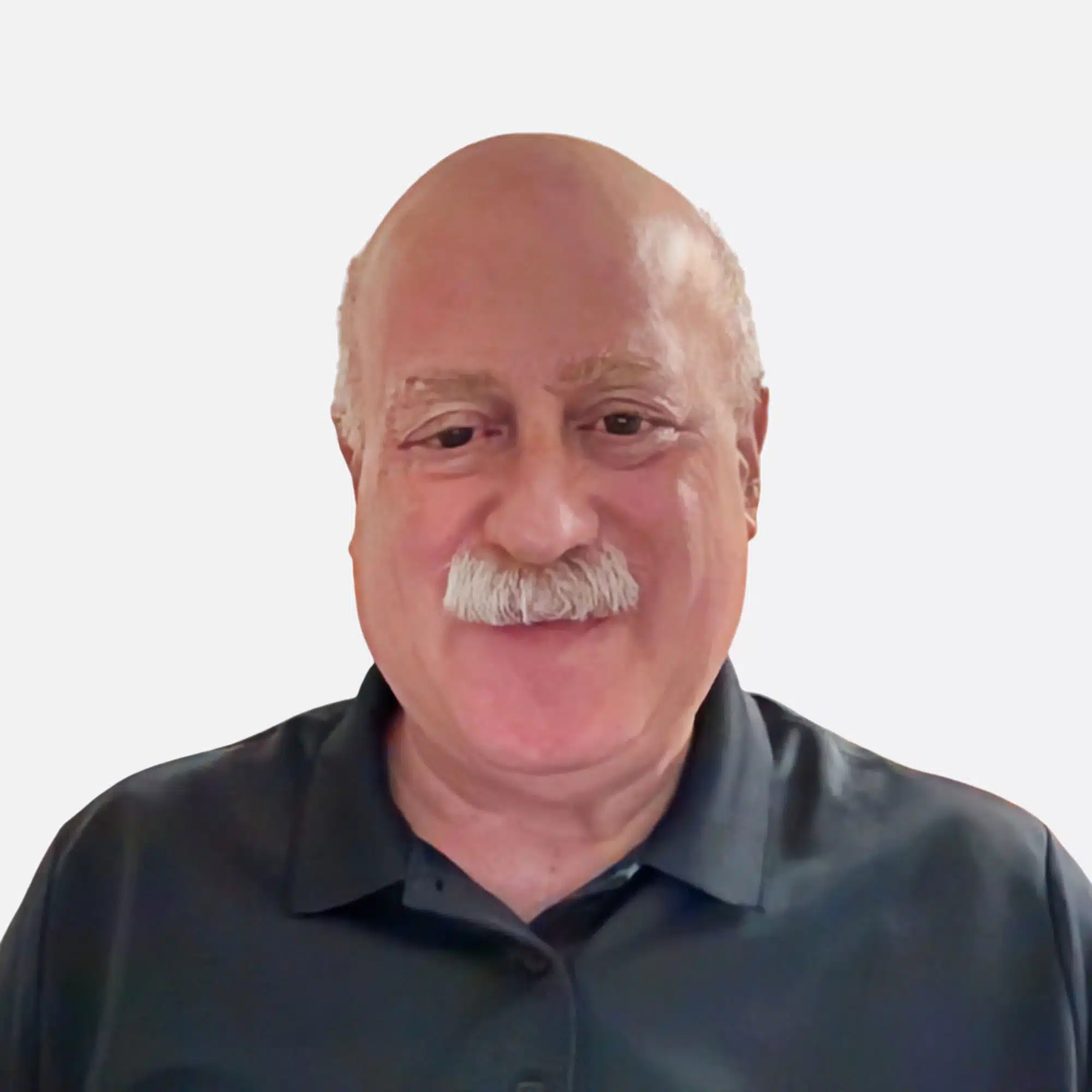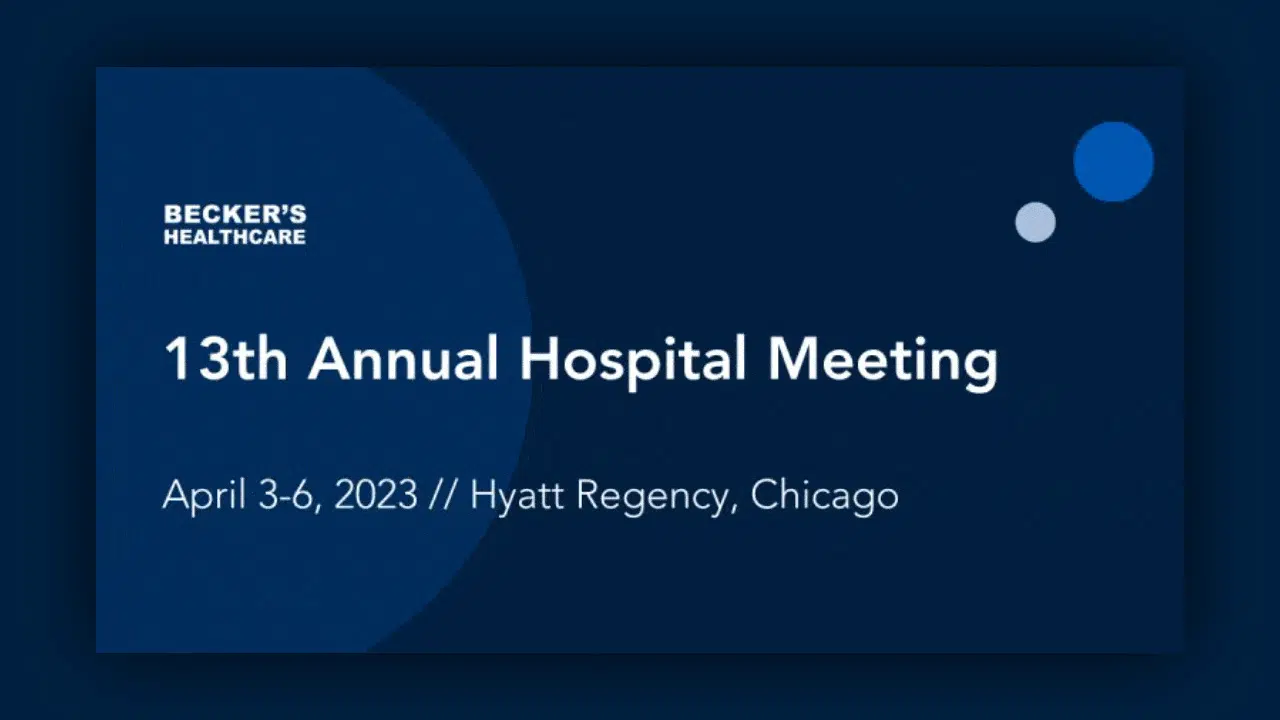The spring event season continues in full force, as 4,200 people—including more than 3,000 from health systems and hospitals—gathered in Chicago last week at Becker’s Annual Meeting. The Becker’s conference combines general sessions with breakouts, where almost all include panel discussions moderated by a Becker’s staff member.
The conference lasted three and a half days, providing a wealth of rich content and discussion on the most buzzworthy topics among health systems executives.
Session Themes: The Patient Experience.
Eight breakouts along with two general sessions emphasized the strong premise that patient experience should be a priority for health systems—the goal should be to create a consumer-pleasing experience similar to what other industries provide. While the importance of patient experience and engagement is acknowledged, no overall agreement was reached regarding tangible ways to achieve and measure success.
The current reality must be acknowledged.
Digital capabilities typically have not progressed beyond scheduling and intake. Longitudinal views, going deep into the details of specialty care journeys, and the ability to create an end-to-end consumer-like experience was not even contemplated in the conversation. Having a digital front door was cited as a significant step for health systems, and few have progressed beyond it.
Suggestions and potential paths forward:
- Bring interactions to the practice level for attempts to personalize the experience.
- Promote self-service as much as possible—this change requires technology enablement and effective ways to interact with patients.
- Partner with the marketing team to understand the “customer”.
- Carefully choose partners to help take the existing technology (EMRs) to the next level.
- Determine ways to measure true engagement and outcomes that positively impact health, financial, and quality & operational results. Measurement is typically done via satisfaction surveys (various types), which have limited capabilities.
Access, diversity, equity, and inclusion are fundamental.
Patient access for all was covered many times in multiple sessions and was recognized as a critical component of managing at-risk patients as part of population health. Some of the common themes included:
- Rural populations, inner city populations, and the neediest populations are all at risk—for some common reasons as well as different ones. Access to healthcare, healthy foods, transportation, and socialization undermine the well-being of all of these groups.
- RUSH President and CEO Dr. Omar Lateef emphasized the reality of health equity; he advised the general session audience to take care directly to local communities and create synergies between all medical locations of every kind—use all of them as access points. Data proves that huge inequities exist by race. As an example, by traveling three stops on the subway in Chicago, the neighborhood life expectancy changes by 15 years.
- Integrated delivery networks (IDNs) are improving methods for directing patients to the proper setting. Some are buying urgent care clinics, while others are working on hospital at-home models. Everyone agrees that virtual care is a permanent fixture in the healthcare landscape.
- Social determinants of health factors are on everyone’s mind. Multiple sessions touched on how organizations can be part of the community, such as by delivering groceries, hosting senior-focused programs, and holding cooking classes. Measuring effectiveness and ROI are part of evaluating programs and must be balanced with prioritizing overall patient welfare. Janet Liang, EVP, Group President, and COO, Care Delivery, shared that Kaiser Permanente asks five basic questions of discharged patients aimed at uncovering potential reasons they may be readmitted, including whether they live alone, have missed appointments and have the resources to manage. Just by asking and collecting the information has led to a 9% decrease in readmissions.
- “Challenge the status quo” was heard over and over from speakers from all corners of the healthcare spectrum. Dr. K. Craig Kent, CEO of University of Virginia Health, stated that communications, compassion, and connectivity are key behaviors that can go a long way with patients, clinicians, and caregivers.
- Geisinger introduced the term precision population health as a way of challenging the status quo and reaching patients with the most meaningful and proactive communications.
Big data and technology impact clinical care.
A general session addressed the sweeping topic of data and technology, featuring representatives from Memorial Hermann, CommonSpirit, Novant, and City of Hope (part of Cancer Centers of America).
The accompanying panel offered advice based on their own experiences and what they see in the future:
- Memorial Hermann summarized the critical need to make access easier, and the end-to-end experience—holistic for patient and clinician—is key. Examples include getting physically closer to patients, such as integrating urgent care clinics with the rest of the system, and walking patients through key steps in a process. Content-specific journeys for specific procedures also stand out as important considerations. Ultimately, with multiple EMRs in the system, too many point solutions dilute efforts focused on the patient.
- CommonSpirit also commented on how the system has multiple EMRs, stressing the need for consolidation or deploying technology to bring the data together—with an emphasis on ensuring data is flowing in real-time. Additional advice included centralizing portals and utilizing partners to fill gaps. Working closely with IT leadership was presented as an imperative for success.
- Novant pointed out that even though digitization often focuses on finding a physician and scheduling, scheduling is near and dear to physicians—they want to control their own schedule. A solution should be created that can satisfy everyone. Additionally, automation (AI, ML) for PCPs to augment decision-making is inevitable. Informed patterns will emerge as a differentiator for health systems. The organization’s most compelling advice was to integrate the back end of the technology stack to achieve one unified and simple patient experience.
- City of Hope (CC of A) related that their organization is providing decision support to augment diagnoses. As many other panelists mentioned, measuring impact is a significant challenge.
Magic Johnson’s Wow Effect

Beckers welcomes celebrity speakers each year from different backgrounds, including sports, business, and entertainment. Magic Johnson spoke at the end of day 1; he ably represented all three areas of expertise while relaying a riveting presentation that engaged the audience.
Magic Johnson was considered to be the greatest point guard of all time, playing 13 seasons in the NBA. When asked his opinion regarding the top 5 basketball players of all time, Magic replied, “Jordan, Lebron, Kobe, Kareem, and Bird. I don’t promote myself—I just win.”
But Magic transformed himself from a sports superstar into a successful businessman. Against the advice of many, he invested in 125 Starbucks in inner city locations. Magic explained how he and his team adapted the Starbucks experience to the demographics, including swapping out the music, changing the menu to include local favorites, and ensuring that the staff were ready to serve the clientele. The result was an unprecedented success.
Magic’s notable lesson was to “know your customer”. Every six months, he conducts both personal and business SWOTs—Strengths, Weaknesses, Opportunities, and Threats—to ensure that he is at the top of his game.
Magic does not draw attention to himself, but he did share that he has sponsored more than 10,000 disadvantaged students to attend college. And with the newly released movie Air, which chronicles the story of Michael Jordan’s partnership with Nike, Magic relayed his own story of sponsorship when he graduated from college. Magic turned down Phil Knight of Nike, who offered mostly stock, and chose Converse because they offered the most money. Magic sheepishly admitted that the Nike stock would be worth over $1 billion today, but Magic was 21 years old and solely focused on the immediate financial return. At that point Magic dropped the microphone and let the audience react.
Tendo’s mission is to become the trusted connection between patients, clinicians, and caregivers. We participate in industry gatherings to further our mission, gain a keen understanding of healthcare priorities, and ensure we are serving the health system community with products that positively impact healthcare, quality, and financial, and operational outcomes.
Improve your patients’ care journey.
It's time to trasfrom the way we approach healthcare. Get in touch with us today and discover the possibiites.


